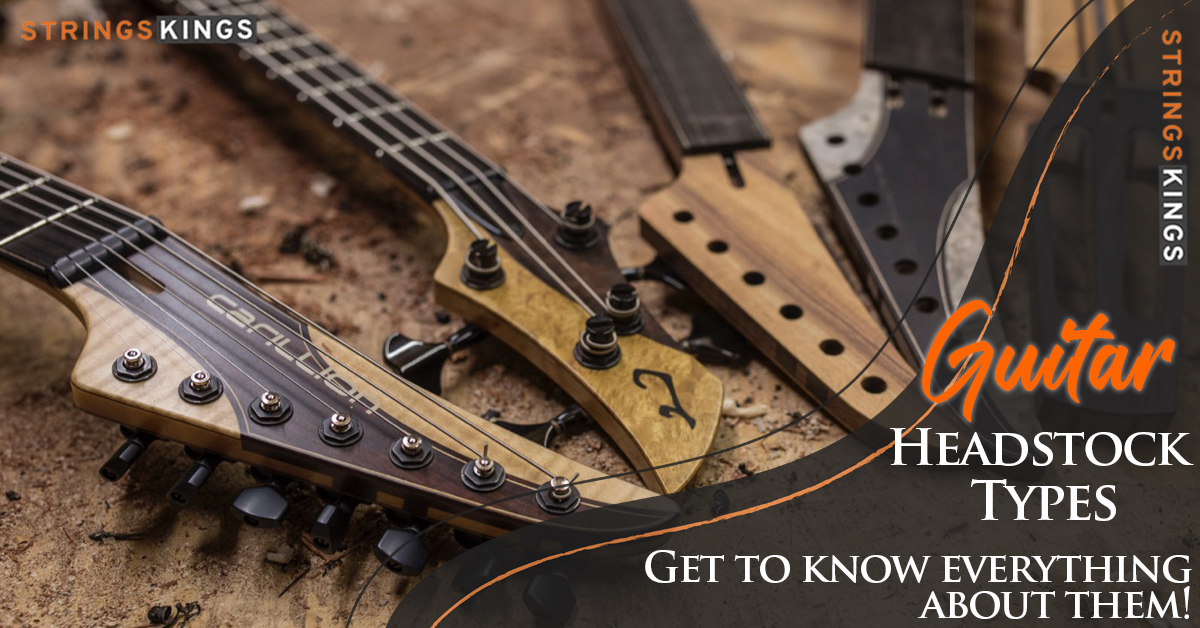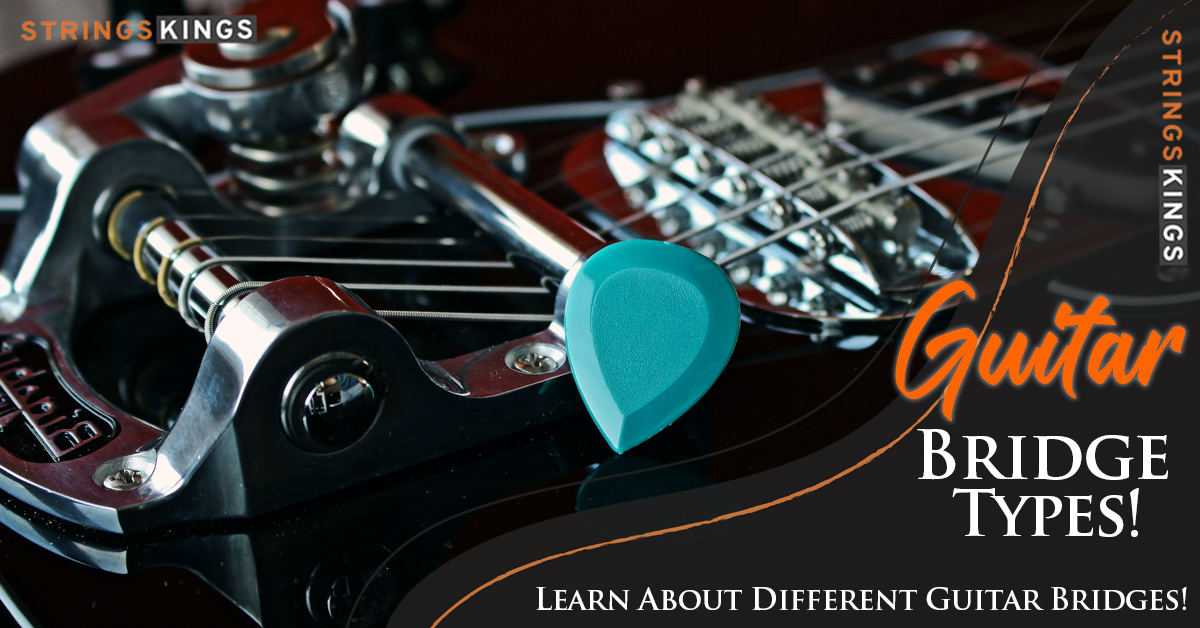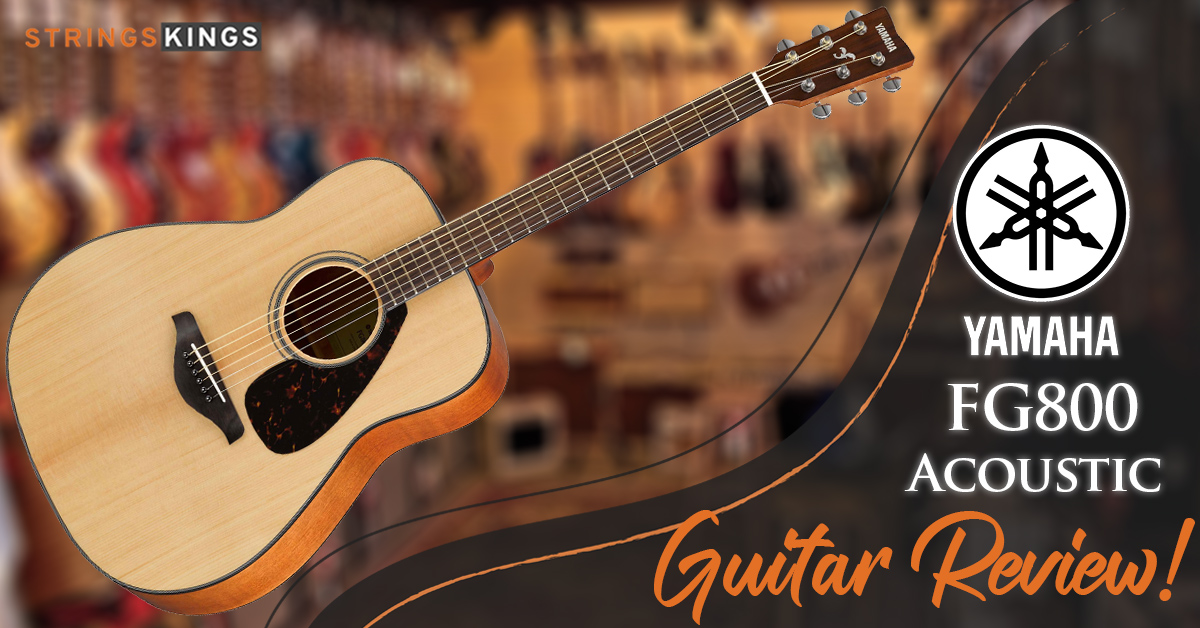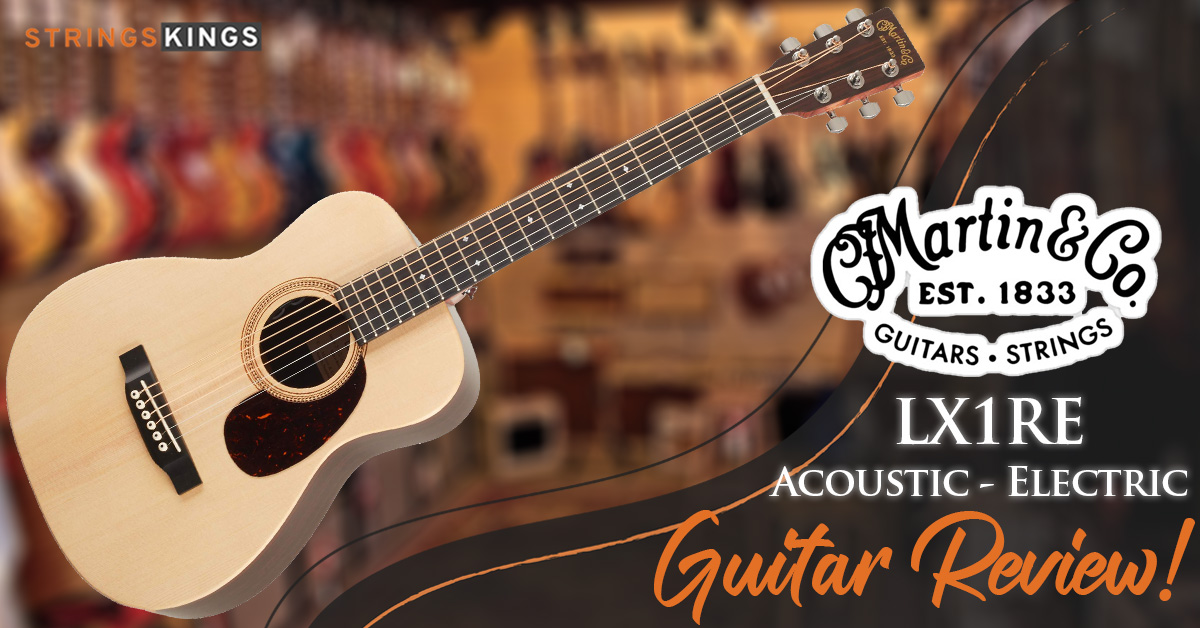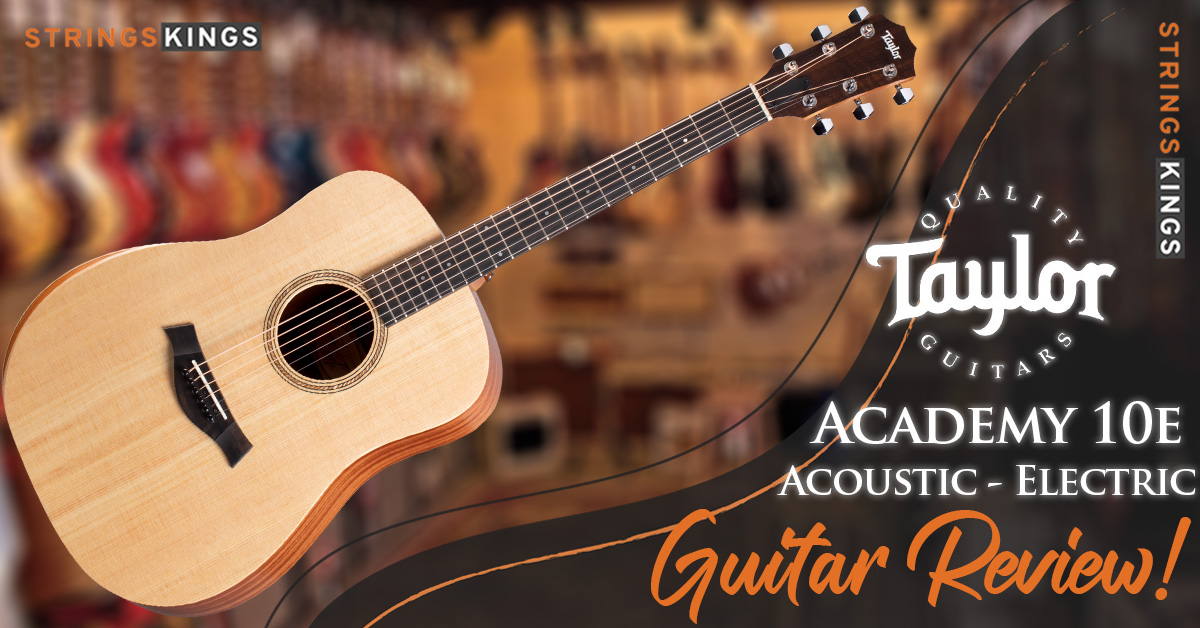Table of Contents
Learn More About Guitar Fretboard Types!
There are many different types of tonewood used by luthiers. Almost all woods have their own characteristics that make them unique and sometimes even more expensive than others.
In contrast to the general variety of wood types used on guitar bodies, the types of wood used on guitar fretboards can be distilled down to three.
In this article, you will learn about how each of these fretboard woods sounds as well as how to recognize them. Buying a guitar will be easier when you know this.
The FretBoard – What Is It?
To get a better understanding of tonewood, let’s talk about fretboards first. Fretboards (also known as fingerboards) are flat pieces of wood that lie parallel to guitar necks. It is important to note that the fretboard and guitar neck are two separate parts!

When you use a right-handed guitar, you place your left hand on the fretboard and that’s where notes and chords are produced.
Frets separate notes. In this case, frets are thin bars of metal that run at right angles to the strings. Using the frets, you can play different pitches as you run down the fretboard.
How Does Fretboard Type Affect Tone?
Tone generally depends more on the strings, pickups, and “guitar nut” than on the fretboard itself. Generally, pickups are responsible for the tone on electric guitars, while the size of the guitar body is responsible for the sound on acoustic guitars. The overall tone can still be influenced by things like construction techniques and wood types.
The guitar fretboard wood is primarily chosen for its character and design. However, there is a small effect on tone, but the biggest impact on your playing style is the way the wood feels due to its density.
Fretboard Woods: What Are The Main Types?
Fretboards are usually made of one of these three types of wood:
- Rosewood.
- Maple.
- Ebony.
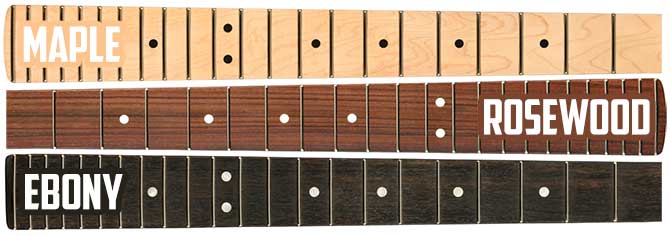
It is sometimes confusing for beginners to know the difference between neck and fretboard. Most people confuse the fretboard and the neck of a guitar by calling them the same thing. As a matter of fact, they are two separate pieces.
Maple or mahogany is typically used for guitar necks. In general, maple is more common than mahogany because maple is viewed as more reliable. Due to its softer and more porous nature, mahogany is susceptible to climate damage. Guitar humidifiers are extremely helpful for all guitars, but they are particularly beneficial for instruments with mahogany necks.
Depending on the fretboard design, it can be glued or one-piece. Most rosewood and ebony fretboards are glued on, but there are also a lot of one-piece maple fretboards.
When you’re a beginner or buying a guitar for yourself for the first time, this information may not be as relevant, but it might prove useful when you start looking for your next guitars after you’ve become more experienced and figured out what you really want.
A guitar fretboard wood type does affect the sound and playability of the instrument, so it is worth taking into account when making a purchase.
What Fretboard Wood You Should Pick?
The best fingerboard wood is entirely subjective – each has certain qualities that may be more pleasing than others. As collectors, we think each of these is special and deserves to be included in a collection.
In any case, if you’re on a budget, you might want to check them out. In the next part, we are going to cover the three basic fingerboard kinds of wood and give you more detailed information about them.
The Rosewood Fretboards
Almost every type of guitar uses rosewood, whether it is electric, steel-string, or classical. There are many reasons why it is popular, including its warm, rich, and balanced tone (deep lows and bright highs). Even some might describe it as mellow. Additionally, it looks great and goes with just about anything.
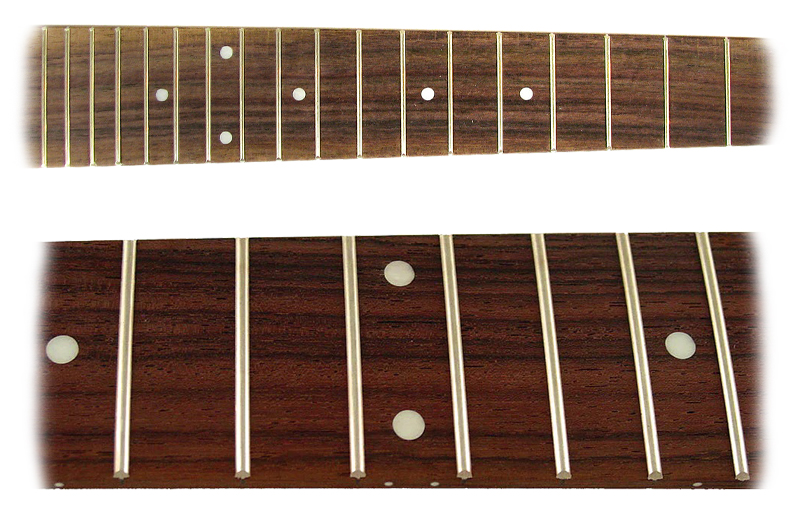
Similar to ebony, which you will learn more about later, it is also a heavy and sturdy wood, which is why guitar manufacturers choose it for their guitars. Indian rosewood is the most commonly used type of rosewood nowadays because it is readily available.
In contrast, Brazilian rosewood is rarely used these days due to exploitation. Due to overlogging and furniture exports, the area has been conserved.
You’ll have a hard time finding a guitar made from Brazilian rosewood, and if you do, it’ll probably cost a lot of money. In spite of this, Indian rosewood has been a great substitute for decades.
Maple Wood Fretboards
Maple fretboards are not only great because of their feel and sound, but also because of their aesthetic appeal! There are so many colors and shapes that they complement. Most Fender guitars have maple fretboards, with rosewood coming in second.
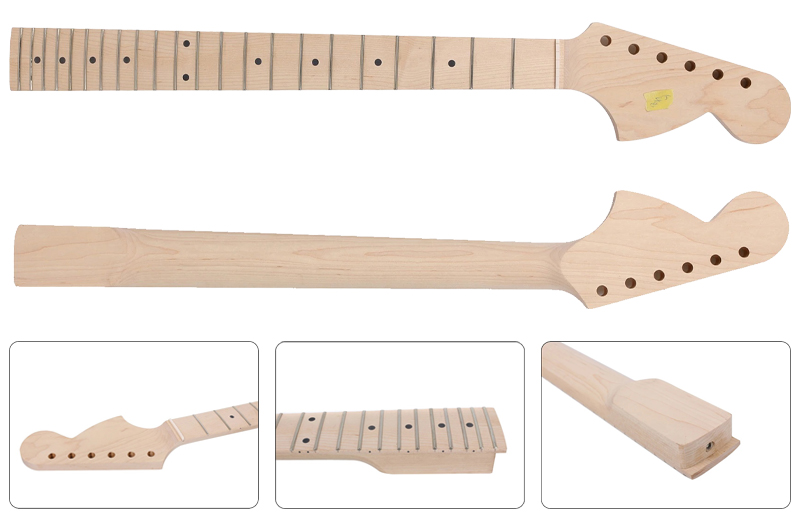
There are both hard and soft maples used in guitars, but most necks and fretboards are made from hard maple, which is dense. It has a very bright sound, which is probably why it was used so often for twangy tones since it has a lot of snap and bite.
Don’t let this discourage you if you’re looking for a metal guitar – maple fretboards have been used by great guitarists for decades. It just sounds different from rosewood. Yngwie Malmsteen and Dave Murray from Iron Maiden both used maple fretboards to great effect.
Ebony Wood Fretboards
Ebony is the least available of the three main guitar fretboard kinds of wood, followed by rosewood and maple. However, it isn’t exactly rare. What’s going on?
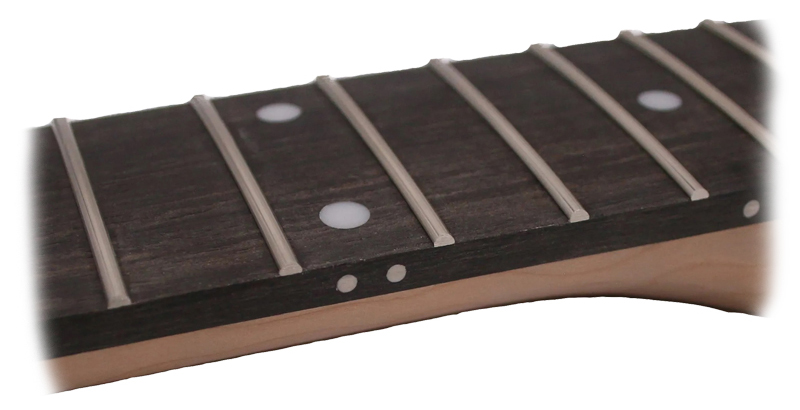
Ebony is one of the most expensive woods because there is a great demand for its benefits, but exportation is restricted, just like certain species of rosewood.
Due to its natural oiliness and fine texture, ebony fretboards are smoother and slicker while also being one of the strongest and densest woods. Ebony’s tone is more similar to maple fretboards, bright and snappy with the same dark aesthetic as rosewood, albeit noticeably darker and grainier.
Apart from their appearance, ebony fingerboards have all of these characteristics that people enjoy. As a result, some guitarists might describe it as a hybrid
Do Fretboard Tonewoods Have a Greater Impact than Other Parts?
Although the fretboard does affect the tone, the wood used in the body has a greater impact. We believe that the wood used on your guitar’s fingerboard is more important for feel and aesthetics.
A guitar’s body is also made from various kinds of wood that vary a lot. Some of them are listed below:
- Alder.
- Ash.
- Basswood.
- Koa.
- Korina.
- Mahogany.
- Maple (can be soft,flamed,quilted,birdseye).
- Poplar wood.
- Rosewood.
- Swamp ash.
As you can see from the list above, there are a variety of options available. The attributes of each will likely be discussed in some of our future guides. There are even a few that are the same woods that are used for fretboards!
If you’re a beginner or intermediate player, try out a few different guitars and see what you like best. With an untrained eye and ear, it can be hard to discern what a guitar is constructed of, but its fingerboard wood is much easier to identify.
Find some guitars that you think sound great and feel great, and try to find out what they are made of. Compare it with other models. The best guitar wood is subjective, as we mentioned previously. Even though some are rarer and more expensive than others, that doesn’t guarantee a better sound. Identifying your interests is the key!
In this video, you will be able to see and learn more about the main three guitar fretboard types:
Last Words
If you do not know what you are looking for when buying a guitar, it can be quite stressful.
It is understandable that wood is not always taken into consideration when buying your first guitar, but if you plan to get another guitar in the future, it is helpful to understand what makes guitars different, beyond brand, shape, color, and so on.
One way guitars differ is the type of fretboard wood they use. While there are only three types of fretboard wood, each one has a different feel.
With our guide, we hope to help you gain a different perspective on guitar fretboards and their pros and cons so that you can choose your next guitar with confidence.
Happy Strumming!

